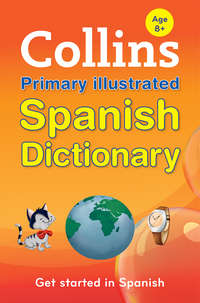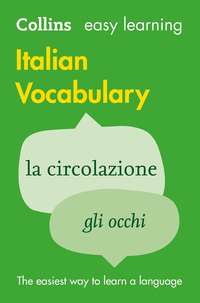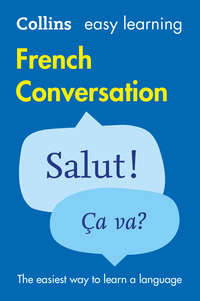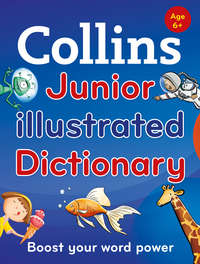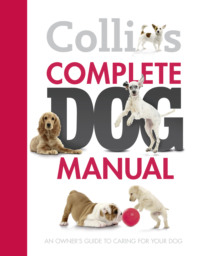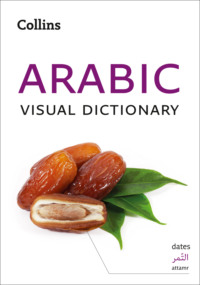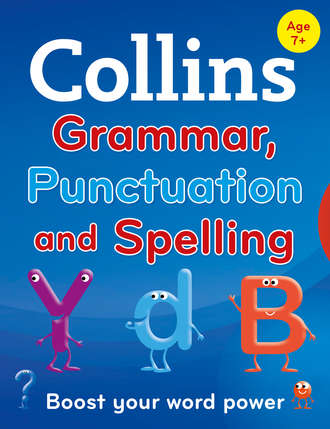
Полная версия
Collins Primary Grammar, Punctuation and Spelling

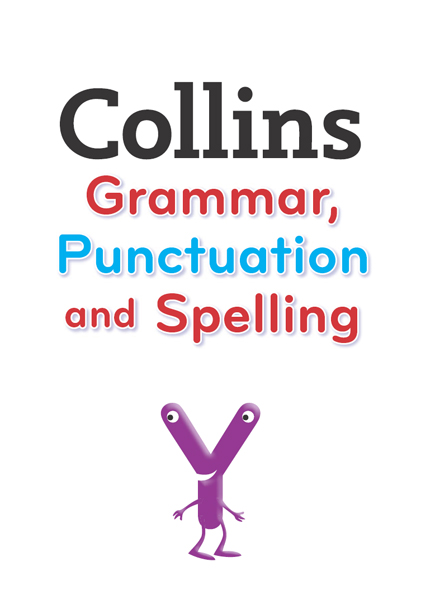
Contents
Cover
Title Page
Introduction
Grammar
What is grammar?
Words
Phrases
Clauses
Sentences
Making words
Writing good English
Synonyms
Antonyms
Layout
Punctuation
What is punctuation?
Letters
Full stop
Question mark
Exclamation mark
Comma
Apostrophe
Inverted comma
Bracket
Dash
Semicolon
Colon
Hyphen
Bullet point
Ellipsis
Spelling
The alphabet
Syllables
Letters and sounds
Consonants and their phonemes and graphemes
Vowels and their phonemes and graphemes
Digraphs and trigraphs
Adding endings to words
Irregular verbs
Adding prefixes and suffixes
Common endings in words
Choosing between endings
Words ending in ough
Silent letters
Some very common words that you have to know
Homophones
How to improve your spelling
Dictionary
How to use the Spelling Dictionary
Aa
Bb
Cc
Dd
Ee
Ff
Gg
Hh
Ii
Jj
Kk
Ll
Mm
Nn
Oo
Pp
Rr
Ss
Tt
Uu
Vv
Ww
Yy
Zz
Index
Copyright
About the Publisher
Introduction
Collins Primary Grammar, Punctuation and Spelling has been designed to support all pupils who are studying grammar, punctuation and spelling from age 7 to 11, whether this is for exams or to revise the key building blocks of the English language.
It contains the rules and advice that will help students get to grips with these essential aspects of the English language. There are clear, easy-to-follow explanations of how grammar works, what punctuation does, and how to spell correctly. Each section – grammar, punctuation and spelling – is laid out in an open, attractive design that guides the user easily through the information provided. Dozens of examples show exactly how the rules of English work.
The final section is a dictionary list of words that pupils must know how to spell. These have been specially selected for this age group based on real-life experience from Spelling Bees conducted by Collins Dictionaries. The words are written out in full, with their word class clearly shown, along with any other forms such as plurals, comparatives and superlatives, and inflections – all of which are also written in full, making it easy for the pupil to understand. Many helpful tips on spelling are also included throughout the spelling dictionary section to make learning easier.
Collins Primary Grammar, Punctuation and Spelling is an indispensable guide to the structure and rules of English, offering clear and accessible guidance for pupils from age 7 to 11.
Explore further at www.collins.co.uk/homeworkhelp for games, activities and extra support for parents and children.
Grammar
What is grammar?
Grammar is the rules of a language that tell you how to organise words to make sentences. Think about language as a series of ‘blocks’ that you put together. There are rules about how these blocks can be joined. The blocks are:
• the word
• the phrase
• the clause
• the sentence
This book explains what these are, how they work and how you combine them to write clear and effective English.
Words
Word class
Every word in a language can be sorted into a group according to what it does within a sentence. These groups are known as word classes or parts of speech. Some words can belong to a number of different word classes. This section explains what the word classes are and what they do.
Nouns
A noun is a word that names something. In a sentence, the nouns are the words that tell you which people, places or things are involved.
There are different kinds of nouns.
Common nouns
These nouns are used to name every example of a certain type of thing. They start with a small letter.
girl city pictureThere are three different types of common nouns.
Concrete nouns
A concrete noun is a physical object that you can actually touch:
donkey bicycle doughnutAbstract nouns
An abstract noun is something that does not physically exist and so cannot be touched:
happiness beauty imaginationCollective nouns
A collective noun is a group or collection of things:
pack bunch flockProper nouns
These nouns are used for a particular person, place or thing. They start with a capital letter.
Andy Murray Switzerland River SeineSingular and plural
The singular form of a noun is used to mean only one of a thing:
a picture one elephant the schoolThe plural form is used to mean more than one of a thing:
two pictures ten elephants four schoolsThe possessive
The possessive (which is sometimes called the possessive case) is used to show that a person or thing owns another person or thing. You add ’s to the end of the noun that is the owner:
my mother’s sister
Nick’s football boots
the cat’s paw
the stadium’s roof
If the noun is a plural that already ends in s, you put an apostrophe at the end of the word:
the soldiers’ uniforms
those boys’ bicycles
African elephants’ ears
tractors’ wheels
You don’t use ’s to make a plural noun. It is only used for showing the possessive.
Adjectives
An adjective is a word that tells you something about a noun. Adjectives can describe nouns in a number of ways:
how they feel or what they are like:
a happy child
a strange boy
a joyful occasion
what they look like:
a large tree
a spotty dress
a gorgeous beach
what they sound, smell, taste or feel like:
a noisy party
a stinky cheese
a delicious cake
a hard seat
what colour they are:
a yellow bag
dark hair
green leaves
where they come from:
our German relatives
my American friend
a northern accent
what something is made from:
chocolate cake
a wooden box
a velvet scarf
Comparative adjectives and superlative adjectives
When you want to make a comparison between people or things, you need to use comparative or superlative adjectives. In the examples below, taller is the comparative form of tall and tallest is the superlative.
Rory is tall.
Rory is taller than his brother.
Rory is the tallest boy in his class.
Comparative
The comparative shows that a person or thing has more of a certain quality than another person or thing. In this case it is the quality of being tall.
You make the comparative form of an adjective by adding the suffix ‑er at the end.
dull + ‑er = duller
green + ‑er = greener
clever + ‑er = cleverer
Not all comparatives are made like this, though. If the adjective is quite a long word, you use more instead.
beautiful → more beautiful
eccentric → more eccentric
interesting → more interesting
Superlative
The superlative shows that a person or thing has the most of a certain quality out of a group of people or things.
You make the superlative form of an adjective by adding the suffix ‑est at the end.
dull + ‑est = dullest
green + ‑est = greenest
clever + ‑est = cleverest
If the adjective is quite a long word, you use most to make the superlative.
beautiful → most beautiful
eccentric → most eccentric
interesting → most interesting
Good and bad
The adjectives good and bad don’t follow the normal rules for comparative and superlative forms.
good better best bad worse worstThere are spelling rules about adding suffixes, and you can see these on pages 81–85.
Adverbs
An adverb is a word that tells you something about a verb. They describe the way in which something is done. Many adverbs end with the letters ‑ly.
Some adverbs tell you how:
Ella runs quickly.
The children sing loudly.
Some adverbs tell you where:
We live here.
The plane flew south.
Some adverbs tell you when:
She is going on holiday tomorrow.
Phone the police immediately.
Some adverbs tell you how much:
I really want to see that film.
He was completely exhausted.
Some adverbs tell you how often:
You never come out to play football.
My sister and I always argue about who sits in the front seat of the car.
Some adverbs go at the beginning of a sentence. These give a comment on the whole sentence:
Fortunately, it didn’t rain.
Sadly, Jackie can’t come on Friday.
Prepositions
A preposition is a word that is used before a noun or a pronoun to describe how things are related or connected to each other. For example, prepositions can tell you:
• where a person or thing is:
a cat in the garden
a book on the table
a sock under the bed
Other prepositions like this include:
above beside underneath near below• the movement of something or someone:
The train came into the station.
We pushed through the crowd.
Other prepositions like this include:
around down up onto to• they also show how things are related in time:
I haven’t seen my auntie since last week.
Conjunctions
A conjunction is a word that is used to join two words or two parts of a sentence together. There are two main types of conjunction.
Co-ordinating conjunctions
A co-ordinating conjunction joins two things that are as important as each other:
I love fish and chips.
It was dry so I walked home.
You can have a biscuit or a cake.
She has neither mother nor father.
It can also show a contrast between two things:
Joe is having a birthday party but he hasn’t invited me.
Subordinating conjunctions
A subordinating conjunction introduces a clause which is less important than the main part of the sentence:
The teacher was angry because the pupils would not pay attention.
Mark read his book while he waited for his mum to arrive.
I must tell you some exciting news before we get started.
Some dogs go a bit crazy when it’s windy.
Pronouns
A pronoun is a word that is used in place of a noun. You use a pronoun instead of repeating the name of a person, place or thing:
Rachel lives next door to me. Rachel is in my class.
> Rachel lives next door to me. She is in my class.
That is the book I am reading just now. The book is very funny.
> That is the book I am reading just now. It is very funny.
I like to sit in the garden. The garden is very sunny.
> I like to sit in the garden. It is very sunny.
Personal pronouns
You use a personal pronoun instead of the subject or object of a sentence:
She is good at maths.
Nobody likes him.
Possessive pronouns
You use a possessive pronoun to show that something belongs to a person or thing:
We had to move out when our house was flooded.
I think the blue jacket is mine.
The dog buried its bone in the garden.
Relative pronouns
You use a relative pronoun instead of a noun to join two different parts of a sentence. The relative pronouns are who, whom, whose, which and that. They introduce information about a noun in an earlier part of the sentence. This noun is known as the antecedent. You use who, whom and whose when the antecedent is a person, and which and that when it is not a person.
who: You use who when the antecedent is the subject of the second clause.
I have an aunt who lives in Australia.
whom: You use whom when the antecedent is the object of the second clause.
It was the same man whom we had seen earlier.
whose: You use whose to show that something belongs to the antecedent.
Scott has a brother whose name is Jamie.
which: You use which when the antecedent is not a person.
We took the road which leads to the sea.
that: You use that when the antecedent is not a person.
George brought the sandwiches that he had made the night before.
Determiners
A determiner is a word that you put in front of a noun to show more clearly what you are talking about. There are different kinds of determiners:
Articles
The word the is called the definite article.
the robot
the traffic
the footballers
The word a is called the indefinite article.
a caravan
a giraffe
a scooter
If the word after a begins with a vowel, you use an instead:
an animal
an umbrella
an orange pencil
Other determiners
Other types of determiners give different information about the noun:
• the distance between the speaker and the thing they are talking about:
this shoe these books that man those houses• who owns the thing:
my bag your phone his kite her mug its door our car their garden• how much or how many:
some sugar much money both girls few people many adults several birds• the exact number:
one melon
the two brothers
fifty roses
ten thousand years
• how something is shared out:
Every child got a prize.
Each runner is given a number.
Either team could win on the day.
Neither side is playing well at the moment.
Verbs
A verb is a word that tells you about an action.
Emily plays the guitar.
The children ran across the field.
We always listen to the radio in the car.
Andrew is a Scout.
Tense
The tense of a verb tells us when the action takes place.
Present tense
If the action is happening now, you use the present tense. There are two types of present tense you can use:
Simple present tense: For this you use the verb as it is, or add an ‑s at the end:
I like broccoli.
You love peas.
Max hates carrots.
We enjoy swimming.
Martin and Kate play the piano.
Progressive present tense: This is also known as the continuous present tense. For this you add the ending ‑ing to the verb and put a form of the verb be in front of it:
I am doing my homework.
You are annoying me.
Lara is painting a picture.
Past tense
If the action has already happened, you use the past tense. There are four types of past tense you can use:
Simple past tense: For most verbs, you add ‑ed to the end to make the simple past tense. You add ‑d if the verb already ends in e:
The children screamed when the lights went out.
The dog barked at the postman.
I scrambled over the wall.
Progressive past tense: This is also known as the continuous past tense. You add ‑ing to the verb and put it after was or were. You use this to talk about something that was still happening at a certain point in the past or when something else happened:
That was the summer when Jack and I were learning to ride.
Richard was cooking dinner when the fire alarm went off.
Present perfect tense: For this you use has or have with the simple past tense of the verb. You use the present perfect tense to show that an action has been completed:
Abby has finished her project on Japan.
I have baked a cake for the birthday party.
Past perfect tense: For this you use had with the simple past tense of the verb. You use this to show that something had been completed when something else happened:
Matthew had finished his lunch before the others had even started.
I had packed my suitcase when the taxi arrived.
Future tense
If the action has still to happen, you use the future tense. You do this by using will or shall and then the verb:
I will be there on time.
He says he will phone later today.
We shall see if that’s true.
Auxiliary verbs
There are three auxiliary verbs: be, have and do. These are used with other verbs to make different tenses.
I was washing my hair.
The chicken had crossed the road.
I did tidy my room eventually.
Be, have and do are irregular verbs, which means that they do not follow the usual rules for making verb forms.
Be
I am happy.
You are sad.
She is tired.
We are excited.
They are late.
I was worried.
You were angry.
He was scared.
We were jealous.
They were sleepy.
He is being silly.
We have been ready for an hour.
Have
I have a cat.
You have a dog.
She has a rabbit.
We have a parrot.
They have no pets.
I had an apple.
You had an orange.
He had a pear.
We had some grapes.
They had strawberries.
Mary is having a baby.
We have had no sleep for two days.
Do
I do not like her.
You do not like him.
She does not like me.
We do not like them.
They do not like us.
I did like him.
You did like her.
She did like you.
We did like them.
They did like him.
The boys are doing their homework in their rooms.
I have done what you told me.
Modal verbs
The modal verbs are can, could, may, might, must, shall, should, will, would and ought. They are used with other verbs to add certain meanings like possibility, doubt or having to do something. Unlike all other verbs, they do not change their spellings:
I can ride a bike.
Olivia can speak Italian.
My friends can all come to my party.
I could be late so don’t wait for me.
You may be right.
I might go to the library after school.
You must listen to the teacher.
Shall we take the dog for a walk?
You should clean your teeth at least twice a day.
Will you hang your jacket up?
I would love a cup of tea.
We ought to leave now.
Phrases
A phrase is a group of words which go together.
a busy street
the family pet
very good at tennis
Although a phrase makes sense, it is not a full sentence and needs more words to make it complete.
We live on a busy street.
The family pet is a tortoise called Bob.
My sister is very good at tennis.
Noun phrases




